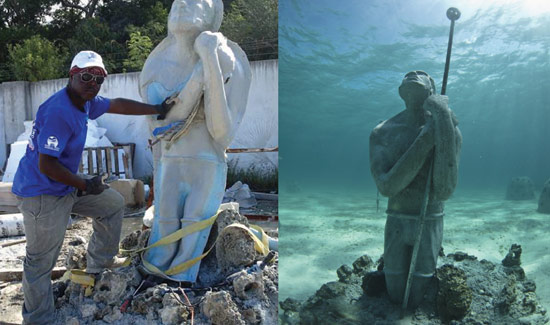 A definitive report for the region has ranked The Bahamas dead last in policy, regulation and penetration when it comes to green technology.
A definitive report for the region has ranked The Bahamas dead last in policy, regulation and penetration when it comes to green technology.
Climatescope 2012, a collaborative effort between the Inter-American Development Bank (IDB) and Bloomberg New Energy Finance, profiles 26 countries in Latin America and the Caribbean and measures the alternative energy sector. While The Bahamas ranked 21 overall, it was placed at the very bottom in regards to “enabling framework”.
“The island nation came in last in the enabling framework parameter largely due to its very low mark in the clean energy penetration category,” the report explained. “To date, The Bahamas has no clean energy policies on its books.”
The sobering report could serve as a wake-up call for both the public and private sectors, as the country falls further behind in alternative energy solutions. The new government has expressed a willingness to promote investment in alternative energy, although little tangible progress has been recorded.
“Policy mechanisms have helped spur major clean energy development in western Europe, the United States and other parts of the world,” the report said. “The potential impact of low-carbon policies on clean energy development in Latin America and the Caribbean is crucial to understanding the environment for climate-related investment in the region and forecasting growth.”
In the overall rankings, Brazil came in first, followed by Nicaragua and Panama. Countries that ranked below The Bahamas included Haiti, Trinidad and Tobago, Guyana, Venezuela and Suriname.
The Bahamas did well in one category in particular, namely clean energy investment and climate financing, placing 9th out of the 26 countries.
In other words, an apparent lack of government policy and regulation has not stopped some green entrepreneurs from throwing their hat into the ring.
“Despite its rank, the island nation has two important strengths: Relatively low cost of financing and a fairly well-developed low carbon businesses and clean energy value chains. In fact, the existing clean energy value chain of clean energy service providers in The Bahamas is among the most robust in the region,” according to the report.
From 2006 to 2011, cumulative funds committed to this sector came in at $3.6 million.
In 2006, about $2.6 million went into financing a photovoltaic system to power LED lights on the runway of the Marsh Harbour International Airport.
The report made specific mention of a $1 million biofuel facility launched by Bahamas Waste, a BISX-listed company, which allows for the conversion of up to 1 million gallons of waste cooking oil into biodiesel.
Nevertheless, while the report mentioned the former government’s Energy Policy Committee and the Ministry of Environment’s solar energy use program, “The Bahamas has yet to develop a policy framework to foster major clean energy deployment”.
Erratic spikes in electricity prices, combined with a gradual fall in solar system costs and the relative isolation of The Bahamas, should make the country an eventual hotbed for residential solar photovoltaics, “even without subsidies”, the report added.
The country has companies providing solar equipment and installation services, but government policies, for now, are lagging far behind.
The report assessed The Bahamas as having 575 megawatts of total installed power capacity, 100 percent of which is supplied through oil and diesel. All data for these indicators was derived from primary sources, such as publications from energy ministries, power market regulators and utility operators. However, in countries such as The Bahamas, Haiti and Guyana, local data is not available.
Best estimates were made based on national energy policies, utilities and the World Bank. The report measured all countries in the region now receiving loans from the IDB.
Jeffrey Todd,
The Nassau Guardian



